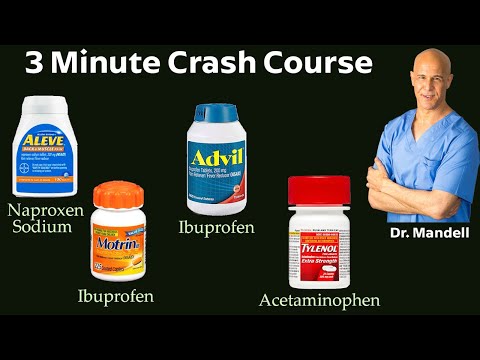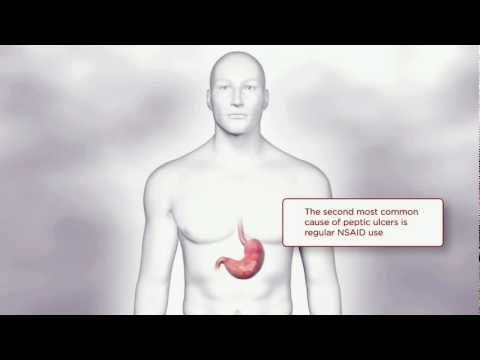When it comes to pain relief, many people wonder, is acetaminophen an NSAID? This question seems simple, but the answer is a bit more intricate. Acetaminophen, commonly known by brands like Tylenol, isn’t classified as a non-steroidal anti-inflammatory drug (NSAID). Unlike NSAIDs, such as ibuprofen, acetaminophen mainly provides pain relief and fever reduction without the anti-inflammatory benefits that these traditional medications offer. In this article, we’ll break down acetaminophen’s properties, compare it with NSAIDs, investigate related compounds, and help you understand effective pain relief options.

1. The Paradox of Acetaminophen: Not a Traditional NSAID
Understanding acetaminophen’s role requires diving into its chemical structure and mechanism of action. Acetaminophen works mainly in the brain, blocking signals that tell us we’re in pain. On the other hand, NSAIDs like ibuprofen and naproxen work throughout the body to reduce inflammation, which can significantly aid in pain caused by conditions like arthritis.
The lack of anti-inflammatory effects makes acetaminophen a go-to option for headaches, muscle aches, and fever, but it falls short in situations where inflammation is the main culprit. Notably, individuals who work out regularly and might experience muscle soreness may find acetaminophen effective, but they might miss out on the broader benefits NSAIDs offer in alleviating inflammation.
People often reach for acetaminophen due to its safety profile; it’s less likely to irritate the stomach compared to NSAIDs. However, it’s crucial to remember that both drugs have their downsides. Acetaminophen can strain your liver if taken in large doses, whereas NSAIDs can cause gastrointestinal issues. Knowledge about these medications is essential for making informed health decisions, especially in pursuing a shredded, muscular physique.

2. Pain Relief: Acetaminophen vs. NSAIDs – A Comparative Analysis
Now, let’s dig deeper into the comparison between acetaminophen and popular NSAIDs.
Patients seeking effective pain management should keep in mind the respective efficacy of each medication. You need to assess your specific pain and situation. When in doubt, consulting with a healthcare professional can help tailor a regimen that best fits your needs, especially if you’ve committed to getting ripped and need effective recovery strategies.

3. Is Phenylalanine a Component to Consider with Acetaminophen?
Now, let’s turn our attention to phenylalanine. Phenylalanine is an essential amino acid that plays a role in protein synthesis. For most people, it’s not an issue, but if you have conditions like phenylketonuria (PKU), it’s a different story. In such cases, monitoring phenylalanine intake is crucial, especially when taking acetaminophen.
Some research suggests that elevated levels of phenylalanine might influence pain perception. This means that your amino acid intake could potentially affect how well acetaminophen works for you. Individuals with specific health conditions should consult their doctor, who can provide insights tailored for their individual circumstances, perhaps recommending an alternative pain relief strategy if necessary.
Keep an eye on your diet and supplement intake. The right balance can be quite impactful if you’re committed to staying in peak shape while managing pain efficiently.

4. Triamcinolone Acetonide and Its Role in Pain Management: What is Triamcinolone Acetonide Used For?
Transitioning from acetaminophen and NSAIDs, let’s look at triamcinolone acetonide, a corticosteroid used for its anti-inflammatory properties, making it ideal for various conditions. This compound is often sought out for joint pain and inflammation relief.
Triamcinolone acetonide’s use often comes into play after the failure of other pain relief methods. People receiving injections often report better outcomes after battling chronic pain compared to those relying solely on acetaminophen or NSAIDs. Testimonies reveal that athletes have successfully incorporated triamcinolone treatments into their recovery routines.
However, like anything, this treatment isn’t without its pitfalls. Long-term injections can lead to side effects, such as weakening connective tissue, which athletes should carefully consider as they build their bodies to the next level. Weighing the effectiveness against the risks is essential for any serious fitness enthusiast.

5. Pantoprazole as a Consideration in Pain Management: What is Pantoprazole Used For?
Let’s take a moment to discuss pantoprazole, a proton pump inhibitor commonly used to protect the gastrointestinal tract. This becomes particularly relevant for those who frequently consume NSAIDs or higher doses of acetaminophen.
When you’re grinding hard and pushing through workouts, you may need pain relief to stay on track. However, using these medications can result in stomach issues like ulcers if you’re not careful. Case studies show individuals incorporating pantoprazole while using NSAIDs often report a more manageable and comfortable experience.
It’s crucial to prioritize your overall health as you embark on your fitness journey. Pairing medications intelligently ensures you get the pain relief you need without sidelining your performance.
6. Triamcinolone Acetonide Cream: What is Triamcinolone Acetonide Cream Used For?
Let’s not forget about triamcinolone acetonide cream, a topical formulation designed for localized pain relief. This cream is frequently used for skin conditions like eczema and psoriasis, but it also serves a role in managing localized inflammation.
Patients who opt for topical treatments often report fewer side effects compared to systemic medications like acetaminophen or NSAIDs. For individuals wary of side effects from oral medications, this can be a game-changer, allowing you to focus on workouts while using an effective alternative for pain management.
However, topical treatments vary in effectiveness. Users should consult their healthcare professionals to identify the best approach tailored to their specific needs.
Final Thoughts: A Multi-Faceted Approach to Pain Management
As we’ve explored, understanding acetaminophen and its role within pain management isn’t straightforward. Recognizing that acetaminophen isn’t an NSAID highlights its unique properties as a valuable analgesic. Furthermore, combining knowledge about medications like triamcinolone acetonide and pantoprazole can contribute to an all-encompassing approach to manage pain effectively.
Remember, pain relief is not a one-size-fits-all scenario. Staying informed about your options allows you to take charge of your health and fitness. Your journey to getting shredded and achieving that perfect physique is still in reach; ensuring your body runs smoothly is the first step in that mission. Never hesitate to reach out and engage with your healthcare provider. Together, you can craft a personalized strategy that keeps your goals in sight while managing discomfort effectively.
Ready to conquer your pain and crush those workouts? Don’t let discomfort hold you back on your mission to achieve the body you want!
Is Acetaminophen An NSAID?
When people hear about pain relievers, they often wonder, “Is acetaminophen an NSAID?” Well, here’s the scoop: acetaminophen isn’t classified as a non-steroidal anti-inflammatory drug (NSAID), but it’s certainly a powerful pain reliever. While medications like ibuprofen and aspirin fall into the NSAID category, acetaminophen is quite unique. Unlike NSAIDs, which reduce inflammation, acetaminophen primarily works to alleviate pain and reduce fever. Fun fact: Did you know that during severe events like an earthquake in NJ, people often reach for acetaminophen to help with the aches and pains that come from the stress?
Now, transitioning into some quirky trivia, let’s look at the fascinating scientific world! Acetaminophen’s precise mechanism is still somewhat of a mystery. Researchers believe that it might affect the endocannabinoid system, which is the same system involved in pain management. Isn’t that wild? Just as peculiar is the adorable naked mole rat, which has a unique pain tolerance that scientists study to learn more about pain relief options. Who knew understanding pain could branch into such intriguing animal studies?
Thinking about timing? Well, if you’re counting down days to an upcoming event, wondering how many days until November 5, 2025, you might want to keep some acetaminophen handy to prep for that celebration! Meanwhile, the versatility of pain relief also extends to everyday occurrences. For instance, after a long workout, a little swelling can leave you with discomfort, similar to swollen lymph nodes in groin affecting mobility. Unlike acetaminophen, NSAIDs would help here by addressing inflammation. So, knowing the difference comes in handy, right?
Remember, every time you reach for that familiar bottle with the label, you dodge a multitude of lower-tier pain relievers. Just like how a pee color chart can reveal hydration levels, understanding the type of pain reliever you’re using can uncover a lot about your body’s needs. So, the next time someone asks, “Is acetaminophen an NSAID?” you can confidently clarify that it’s a separate breed of pain relief!



























